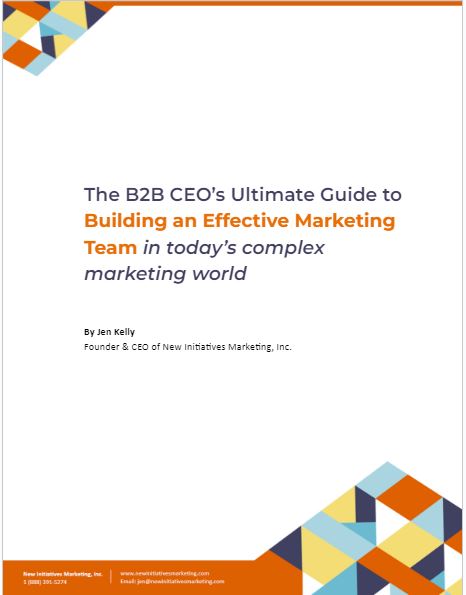White papers – the foundational piece of your next B2B marketing campaign
Today’s marketing takes place online. Organizations of all sizes can reach new customers, build stronger relationships, and demonstrate the value of their solutions and expertise.
Content is one of the most effective digital marketing tools. Defined by HubSpot as “the process of planning, creating, distributing, sharing, and publishing content to reach your target audience,” content marketing has become the go-to strategy for successful organizations. In fact, a 2020 survey found that 70 percent of marketers are actively investing in content, with 24 percent planning to increase their investment in 2021.
From blog posts and infographics to webinars, podcasts, and more, content can take many different forms. But there’s one type that stands out for its ability to be the foundation of your marketing and lead generation activities – the marketing white paper.
In this article, we’ll define what we mean when we talk about white papers for marketing, explain what type of organizations are best suited to white papers, and introduce how you can achieve results on your next campaign.
If you want to learn more about some of the common challenges that organizations face with their white paper projects, download our own white paper, Demystifying White Papers – How to get better content and generate more leads.
What Is a White Paper?
The term white paper means different things depending on who you ask. In industries like high-tech or pharmaceuticals, white papers often refer to technical or scientific documents aimed at other technical readers. In government, white papers are used to present policy and review legislation.
As marketers, we view white papers a bit differently. Looking to HubSpot again, they define a white paper as “a persuasive, authoritative, in-depth report on a specific topic that presents a problem and provides a solution.”
Digging deeper into the definition, we can see that there are three key elements. First, white papers should be persuasive, authoritative, and in-depth. They are typically 2500-3500 words and written in an educational and informative style. They aren’t just long blog posts, and they aren’t product pitches or sales documents. Instead, they allow you to demonstrate your expertise and position yourself as a thought-leader.
Second, good white papers are focused on a specific topic. Rather than trying to be all things to all people, focusing on a single key message allows you to explore it in more detail and provide a higher level of insight and depth.
Finally, white papers should present a problem and provide a solution. Your reader should finish the paper knowing more than they did when they started.
Don’t be afraid to give too much away. No one will become an expert at what you do just by reading it. You want your reader to feel confident that you know what you’re talking about and that you can help them overcome their challenge and navigate the next steps in their project.
Who Should Use White Papers?
White papers are great, but they aren’t for everyone. B2B companies with complex, innovative, or technical solutions tend to be best suited to the level of depth that white papers provide. They can also be used by organizations with long sales cycles that require multiple decision-makers, a significant budget, and an educational approach to selling.
For example, most people won’t bother to read a 3000-word document just to decide which type of soft drink to buy.
However, an executive at a soft drink manufacturer may download and read a paper about a new flavour technology or a new factory automation solution.
B2B buyers are looking to companies to provide information. A 2021 survey found that 42 percent of B2B buyers viewed white papers as the most valuable content when researching a purchase, second only to research surveys and reports. The same survey found that 57 percent prefer white papers early in the buying process, compared to just 10 percent in the late stage when they are comparing solutions directly.
Successful White Papers Generate More Leads
Once published, white papers can typically be used for 18-24 months. Most can then be updated or refreshed with new stats and information to further extend their life.
To achieve success, organizations should view their white paper as the foundation of a marketing campaign. By defining your strategy and developing a plan to promote the paper from the start, you’ll be able to achieve positive results and generate more leads for your sales team.
The white paper can also be spun off into various formats that drive people to download the full document. For example, this blog post is based on the first section of our recent white paper.
If you’re thinking about starting a white paper campaign and want to avoid the challenges that hold organizations back from achieving results, download Demystifying White Papers – How to get better content and generate more leads. Bridge the Gap Marketing Solutions and New Initiatives Marketing Inc. have been working together since 2016 on white paper projects for North American B2B companies. To discuss your next project, contact us today.


